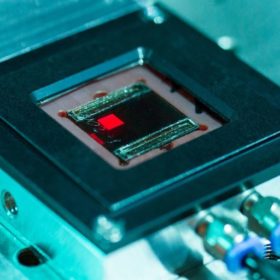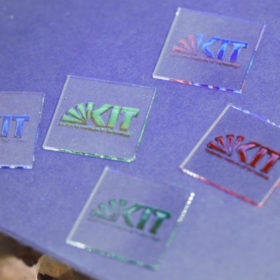German researchers increase open circuit voltage of perovskite solar cells to 1.26 volts
The voltage is key to improving efficiency, the scientists say. It indicates how much energy is lost within the cell through ‘recombination processes’.
Korean scientists demonstrate new lead-free perovskite
A team of researchers from South Korea’s Ulsan National Institute of Science and Technology has demonstrated a new type of tin-based perovskite. The researchers say that, despite current low efficiency, levels could lead to improved understanding and the development of solar cells using lead-free perovskites.
European researchers want to develop digitally printed, highly efficient and stable perovskite PV modules
German and Greek scientists are working with industrial partners on the technological feasibility of making solar modules based on perovskite absorbers. The prototypes should be freely configurable in size, shape and color.
UK researchers say transport layers with low permittivity and doping make perovskite solar cells more stable
Scientists are seeking to push ion migration to areas of perovskite-based solar cells where more electric charge can be extracted.
German researchers achieve 25.5% efficiency for perovskite tandem solar cells
The research team was able to improve the cell efficiency by 2.1%. The cell silicon layer was etched on the back-side, while a a polymer light management (LM) foil was applied to the front-side of the device.
Solar panel theoretical efficiency limit increases by 33%
Researchers at the University of Amsterdam have found what they describe conclusive evidence that perovskites feature “efficient carrier multiplication,” effectively increasing the single layer efficiency limit from 33% to 44%.
Swiss research group develops methylammonium-free perovskite cells
The organic methylammonium (MA) molecules in the cell were replaced with inorganic elements such as rubidium and cesium. The planar perovskite cells resulting from the research have an efficiency of more than 20%.
Scientists show hybrid organic–inorganic perovskite is ferroelastic, not ferroelectric
This means that this promising material, contrary to common belief, is able to form domains of polarized strain to minimize elastic energy. The research team made its discovery by using multimodal imaging.
Oxford PV, Oxford University target 37% efficient perovskite solar cells
The solar company has launched a five-year research project with the British scientists, which has been funded with £2.5 million from the U.K. Government. The goal is to develop a thin film multi-junction perovskite solar cell with a 37% efficiency and long-term stability.
Researchers propose doubling today’s solar panel efficiency using two weird tricks
By double stacking a perovskite-silicon solar cell and using the cell in a glass-on-glass bifacial solar module, scientists model that a 30-36% efficient solar module can be attained.










